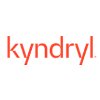Cloud Architect
20+ Cloud Architect Interview Questions and Answers

Asked in Novartis

Q. How do you manage access control for a data platform with multiple vendors like AWS, Snowflake, and Databricks?
Access control for data platform with multiple vendors is managed through IAM policies, role-based access control, and centralized identity management.
Implement IAM policies to control access to resources within each vendor platform
Utilize role-based access control to assign permissions based on job function or responsibility
Implement centralized identity management to ensure consistent access control across all platforms
Regularly review and audit access controls to ensure co...read more

Asked in Kyndryl

Q. What are SR-IOV and DPDK, and how do they compare in terms of performance?
SR-IOV and DPDK are technologies used to improve network performance in virtualized environments.
SR-IOV (Single Root I/O Virtualization) allows a single physical network interface card (NIC) to appear as multiple virtual NICs, improving network performance by reducing overhead.
DPDK (Data Plane Development Kit) is a set of libraries and drivers for fast packet processing, bypassing the kernel network stack for improved performance.
SR-IOV is hardware-based virtualization, while...read more

Asked in HCL Group

Q. 1. Explain cloud 2. Have you performed any activity in the cloud 3. How many public cloud players are there
Cloud is a network of remote servers that store, manage, and process data.
Cloud computing allows users to access data and applications from anywhere with an internet connection
Examples of cloud services include AWS, Azure, Google Cloud, and Dropbox
Cloud architecture involves designing and managing cloud infrastructure for optimal performance and security

Asked in Kyndryl

Q. What are the detailed steps for manually deploying OpenStack?
Manually deploying OpenStack involves several steps including setting up the environment, installing the necessary components, configuring networking, and launching instances.
Set up the environment by installing a base operating system such as Ubuntu or CentOS.
Install the necessary components like Keystone, Glance, Nova, Neutron, and Cinder.
Configure networking by setting up bridges, VLANs, and IP addresses.
Launch instances to test the deployment and ensure everything is func...read more

Asked in Kyndryl

Q. What networks are required to build an OpenStack environment?
Various networks like management network, data network, external network, and storage network are required for an OpenStack environment.
Management network for communication between OpenStack services and components
Data network for transferring data between instances
External network for connecting to the outside world
Storage network for storage operations like block storage or object storage

Asked in Hexaware Technologies

Q. What are the different types of Azure load balancers? Additionally, what is a SAS token in Azure?
Azure offers several load balancers for distributing traffic and a SAS token for secure resource access.
Azure Load Balancer: Distributes incoming network traffic across multiple servers.
Application Gateway: A web traffic load balancer that enables you to manage traffic to your web applications.
Traffic Manager: A DNS-based traffic load balancer that allows you to distribute traffic globally across Azure regions.
Internal Load Balancer: Used for load balancing traffic within a v...read more
Cloud Architect Jobs




Asked in Hexaware Technologies

Q. Can you describe the architecture of your last project and the Azure features that were utilized?
Designed a scalable healthcare application on Azure using microservices and serverless architecture for efficient data processing.
Utilized Azure Kubernetes Service (AKS) for container orchestration, enabling easy scaling and management of microservices.
Implemented Azure Functions for serverless computing, allowing event-driven processing of patient data.
Used Azure Cosmos DB for a globally distributed database solution, ensuring low-latency access to patient records.
Integrated...read more

Asked in Kyndryl

Q. What is the process flow for instance creation?
The process flow for instance creation involves selecting the instance type, configuring the instance settings, launching the instance, and monitoring its status.
Select the instance type based on requirements (e.g. CPU, memory, storage)
Configure the instance settings such as network, security, and storage options
Launch the instance using the chosen settings
Monitor the instance status to ensure it is running properly
Share interview questions and help millions of jobseekers 🌟


Asked in Hexaware Technologies

Q. What is the asynchronous publish-subscribe pattern in Azure?
The asynchronous publish-subscribe pattern in Azure enables decoupled communication between services using message brokers.
Decouples message producers and consumers, allowing them to operate independently.
Uses Azure services like Azure Service Bus, Azure Event Grid, and Azure Event Hubs.
Producers publish messages to a topic, and subscribers receive messages asynchronously.
Example: An e-commerce application where order placement (producer) triggers notifications (subscribers) ...read more

Asked in Kyndryl

Q. What is the function of a nova conductor?
Nova conductor is responsible for offloading certain tasks from the Nova compute service to improve performance and scalability.
Manages scheduling and resource allocation for instances
Handles live migrations of instances between compute nodes
Improves performance and scalability by offloading tasks from Nova compute service

Asked in HCLTech

Q. What is the difference between Application Insights and Azure Monitoring?
Application Insights is a tool for monitoring the performance and usage of applications, while Azure Monitoring is a broader service for monitoring the health and performance of Azure resources.
Application Insights is focused on monitoring applications and provides detailed insights into application performance, availability, and usage.
Azure Monitoring is a comprehensive service that monitors the health and performance of various Azure resources, including virtual machines, d...read more

Asked in Novartis

Q. Design a data processing system for 1 PB of data per day and describe the Spark cluster configuration.
Design a data processing system for 1 pb data per day with Spark cluster configuration
Use a distributed storage system like HDFS or S3 to store the massive amount of data
Deploy a large Spark cluster with high memory and CPU resources to handle the processing
Utilize Spark's parallel processing capabilities to efficiently process the data in parallel
Consider using Spark's caching and persistence mechanisms to optimize performance
Implement fault tolerance mechanisms in the Spark...read more

Asked in Hexaware Technologies

Q. What is the purpose of Event Grid in Azure?
Azure Event Grid enables event-driven architectures by facilitating the routing of events from various sources to handlers.
Decouples event producers and consumers, allowing for scalable architectures.
Supports multiple event sources like Azure Blob Storage, Azure Functions, and custom applications.
Enables real-time event processing, such as triggering workflows when a new file is uploaded to Blob Storage.
Integrates with Azure services and third-party applications, enhancing au...read more

Asked in KPMG Global Services

Q. What is North-South and East-West traffic?
North-south traffic refers to communication between a client and a server, while east-west traffic refers to communication between servers within a network.
North-south traffic is traffic that flows between a client and a server, typically involving external network communication.
East-west traffic is traffic that flows between servers within a network, often involving internal communication.
Examples of north-south traffic include a user accessing a website hosted on a server, ...read more

Asked in Novartis

Q. Discuss caching mechanisms in tools like Redshift and Snowflake.
Caching in tools like Redshift and Snowflake improves query performance by storing frequently accessed data in memory.
Caching in Redshift involves using WLM (Workload Management) to allocate memory for caching frequently accessed data.
Snowflake uses a feature called Result Caching to store query results in memory for faster access.
Caching helps reduce the need to access disk storage, improving query performance and reducing latency.

Asked in Persistent Systems

Q. How do you save data transfer costs?
Optimize data transfer by compressing data, using caching, minimizing unnecessary transfers, and utilizing efficient protocols.
Utilize data compression techniques to reduce the size of data being transferred
Implement caching mechanisms to store frequently accessed data locally and reduce the need for repeated transfers
Minimize unnecessary data transfers by only sending essential data and avoiding redundant transfers
Utilize efficient protocols such as HTTP/2 or QUIC to optimiz...read more
Asked in PalTech Consulting

Q. What is the difference between Git fetch and Git pull?
Git fetch downloads changes from the remote repository, while git pull downloads changes and merges them into the current branch.
Git fetch only downloads changes from the remote repository, but does not merge them into the current branch.
Git pull downloads changes from the remote repository and merges them into the current branch.
Git fetch is useful for reviewing changes before merging, while git pull is more convenient for quickly updating the local branch.

Asked in KPMG Global Services

Q. How do you implement a hybrid cloud?
Hybrid cloud implementation involves integrating public and private cloud environments for flexibility and scalability.
Identify workloads suitable for public and private clouds
Establish secure connections between the two environments
Use cloud management tools for centralized control and monitoring
Implement data migration strategies for seamless movement between clouds

Asked in KPMG Global Services

Q. operating models in Hybrid Cloud
Operating models in Hybrid Cloud refer to the strategies and frameworks used to manage and optimize the combination of on-premises and cloud resources.
Hybrid Cloud operating models involve integrating on-premises infrastructure with public and private cloud services.
They require a balance between security, cost-effectiveness, and performance.
Examples of operating models include cloud bursting, data tiering, and workload migration strategies.
Organizations may choose to adopt a...read more

Asked in EPAM Systems

Q. Explain Ingress.
Ingress is a Kubernetes resource that manages external access to services within a cluster.
Ingress allows you to define routing rules to map incoming requests to services based on the request host or path.
It acts as a layer 7 load balancer, directing traffic to the appropriate services.
Ingress controllers are responsible for implementing the rules defined in the Ingress resource.
Common Ingress controllers include Nginx Ingress Controller and Traefik.
Ingress can provide SSL te...read more
Interview Questions of Similar Designations
Interview Experiences of Popular Companies








Reviews
Interviews
Salaries
Users

















